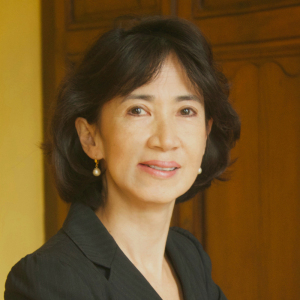por
Sean Ruck, Contributing Editor | July 15, 2022
From the July 2022 issue of HealthCare Business News magazine
Professor in Oncologic Imaging, Regina Beets-Tan, chair of the Department of Radiology at the Netherlands Cancer Institute in Amsterdam and current president of the European Society of Radiology spoke with HealthCare Business News in advance of the European Congress of Radiology taking place July 13-17 in Vienna. Professor Beets-Tan shared insight on what drives her and what she believes needs to drive radiology in the near and long term.
HCB News: Who or what first inspired you to pursue a career in healthcare?
Regina Beets-Tan: My dad was a medical doctor. So I think that’s the short answer. He inspired me because he was a medical doctor and a very respected leader in church.
HCB News: Did your dad have the opportunity to see you rise through the field?
RBT: No. It’s unfortunate because he would have been so proud. But he died just one month after his retirement and I was just at the start of my residency at the time.
HCB News: He did get the chance to see you following in his footsteps though.
RBT: That’s true. And my mom is still very healthy, and that’s the reason I convinced her to come to ECR, so she can witness this on behalf of my dad. She’s very proud, she is coming.
HCB News: Can you tell us about your background with the European Society of Radiology? How you came to join, how you elevated yourself to the level you’re at now.
RBT: You start as a researcher presenting at ECR. I remember so well my very first scientific presentation at my very first ECR — that was quite an experience. Over the years you grow into the leadership because of a track record that has been built. As faculty or as ESR committee member you show commitment and are given opportunities to take challenging tasks and deliver. The more you show you can deliver the more you’re considered for even more challenging tasks.
I’ve never had the ambition to take seats. The influential positions I was and am now in needs to serve a bigger goal. I have a strategic mind, I’m not so much for details, but if I see something that needs to be changed and there’s the opportunity, I grab it. So for me, the most important thing is my vision, which has been formed since the start of my career in radiology. I was trained as a radiation oncologist, but the radiation oncologists were using conventional X-rays to see the tumor and guide their treatment but we all know the poor soft tissue contrast resolution of X-rays. I knew radiology had better tools — MR scans, CT scans — and I didn’t understand why those images were not used to better guide the radiation treatment. That was 30 years ago. I noticed the gap between the two worlds. I thought about how I was technically oriented and a researcher and I would do much more good if I go to the radiology world and help the radiologist make the bridge to the clinical world. So 30 years ago when I transferred as a radiation oncologist into another specialty in radiology that was my mission. It was to have the radiologist’s role be more than just experts who follow the orders from the clinics, experts who evaluate images using pattern recognition sitting in the dungeon the whole day without any interaction with the referring physicians simply because of the high workload. I did not want to accept that, because I knew that radiologists can add more value to patient care if they can combine the technical knowledge with their knowledge about treatment. But for that, a change needs to happen and radiologists need to become more visible.
